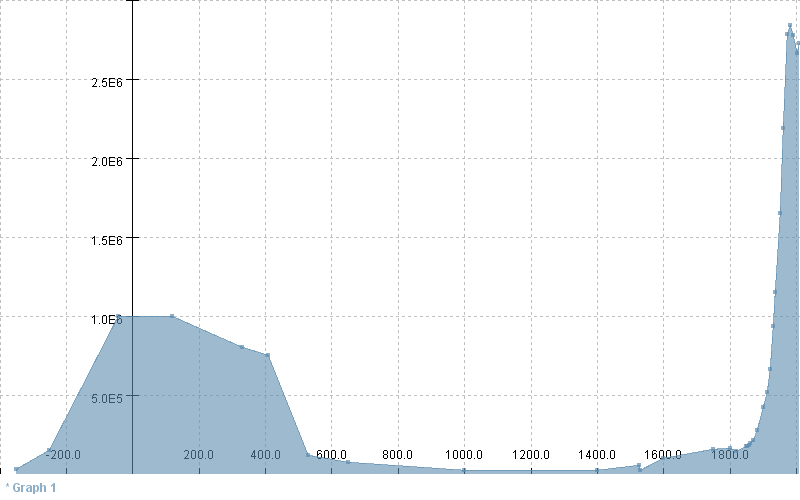I plotted a graph of Rome’s population through history [source]. Some points: the rise and fall of Ancient Rome was roughly symmetrical (compared to the rapid decline of societies such as Greenland in Jared Diamond’s ‘Collapse’); the population during the Renaissance was miniscule (yet it was still a global center), when Michelangelo was painting the Sistine Chapel it was considerably smaller than a town like Palo Alto is today (60K); Rome at its nadir was about the size of Google (20K employees); the growth of Rome during the Industrial era is much greater than the rise of Ancient Rome.
I’m not sure what the population of Rome’s hinterland would have been in ancient times, but assuming that present day Rome is more sprawling, the 4 million inhabitants of greater Rome would perhaps show the post industrial city’s growth as being even more extreme than its ancient counterpart.
Not entirely facetiously, note that the extended period of decline and relative stagnation between 400 and 1500 roughly corresponds to Nicaean Councils of the 4th century and the Copernican revolution of the mid 16th, events which stake out what could reasonably be called the Christian period, (or partially, at least, the Muslim one, depending on your perspective).
